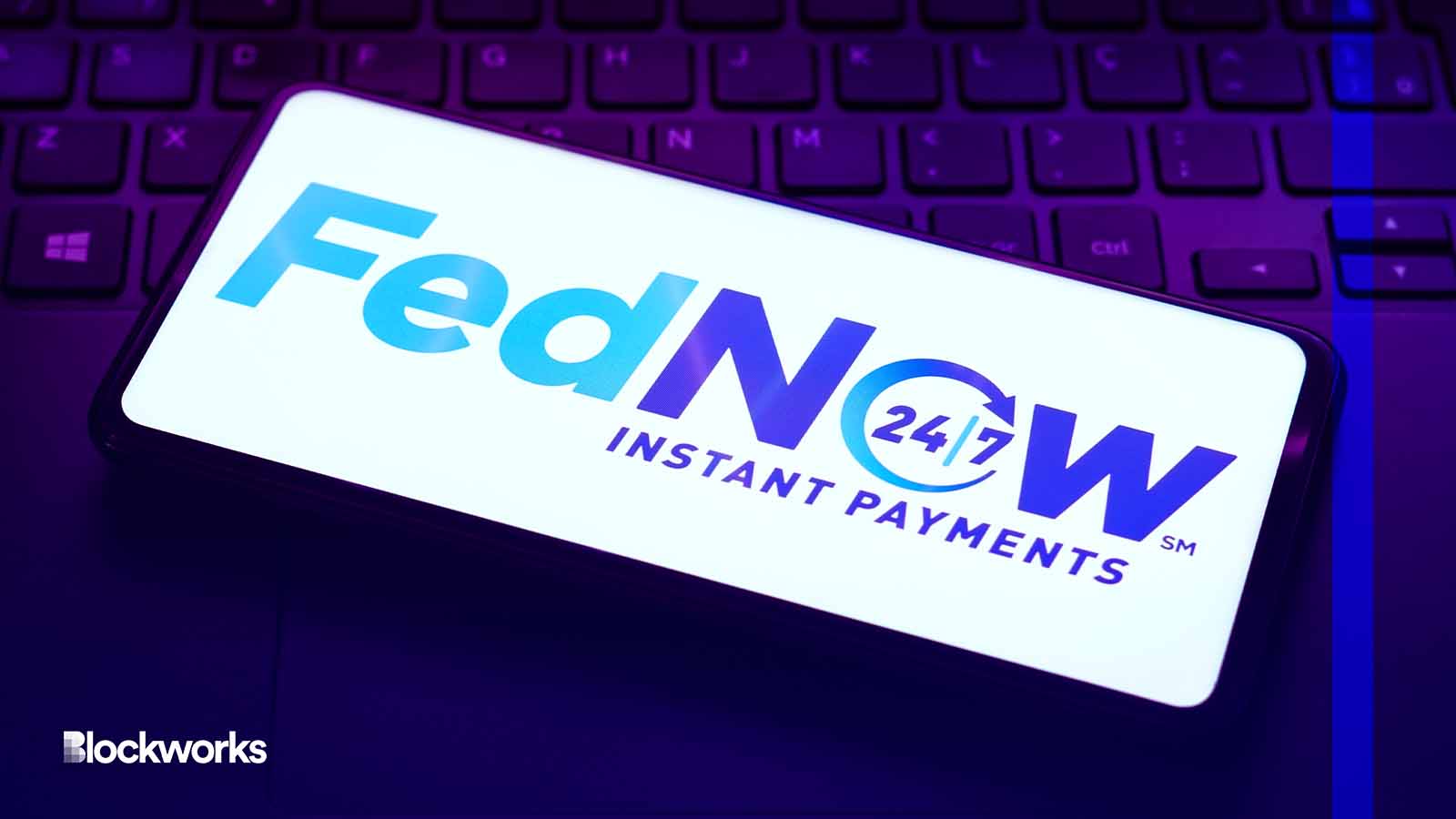Federal Reserve’s FedNow unlikely to pose a threat to stablecoins
The ambitious effort by the Federal Reserve has been in the works since 2019, and the lag has given stablecoins a lot of room to run

rafapress/Shutterstock modified by Blockworks
FedNow does not appear to pose much of a threat to stablecoins, despite the two having more than a few financial characteristics in common, say some observers.
Though it officially launched on Thursday, the Federal Reserve’s FedNow, which enables instantaneous settlements for dollar payments around the clock, has been in the works since 2019. Stablecoin issuers and users have had time to digest the product.
And they’ve found a number of persisting use cases for stablecoins that are outside the scope and capabilities of FedNow.
Ryan Rasmussen, an analyst for Bitwise Asset Management, told Blockworks that news of the Federal Reserve’s service kicked off a “bit of an existential crisis” for stablecoin users. But that crisis, he said, faded fast once industry participants better understood that the product isn’t a direct stablecoin competitor.
“It ultimately only corners off a small portion of the stablecoin market,” Rasmussen said. “It’s great for banks in the US, but it doesn’t really help the US unbanked community or the underbanked community.”
Stablecoin issuers in the US, or those based abroad that pegged their stablecoins to the dollar, have long touted their immediate settlement as superior to transfers of fiat between banks and businesses. Those transfers, as well as exchanges between individuals, have largely been executed via ACH since the advent of digital banking, taking one to three days to settle.
Since their inception, stablecoin issuers have noted their potential for cross-border remittance payments at a fraction of the cost — and with none of the lengthy delays — of traditional bank-to-bank or retail wiring services.
The fact that FedNow does nothing to change that calculus, since it applies only to US banks, represents a significant opening for stablecoins, Rasmussen said.
“[FedNow] doesn’t really help reduce the remittance fees and everything that goes into them,” he said. “Sending money cross-border, stablecoins are obviously great for that..”
An archaic US banking system
US banks often experience additional lags through weekends, when US banks are closed. Critics have for years called the system archaic, pointing to the fact that the US has lagged a number of European countries — including the United Kingdom, Italy and Sweden — in setting up a system enabling instant and efficient payments.
Over the last several years, meanwhile, stablecoin issuers including Circle, as well as their usage and adoption proponents, have pushed the narrative that stablecoin products could do what US banks could not: Immediately execute transfers at any time, seven days a week.
Tether (USDT) had a $83.8 billion market capitalization on Thursday afternoon in New York, with USDC clocking in at $26.9 billion. Even combined, both represent a small fraction of the funds that change hands through the banking system each day.
But the outlook for stablecoins doesn’t seem all that dismal, despite the Federal Reserve supposedly catching up to a significant chunk of their value proposition. With crypto concerns mounting that a US CBDC that could stifle digital asset innovation is on the horizon, there’s been some sentiment that FedNow could eliminate the need for a CBDC.
Ryan Burke, GM of invest at M1, told Blockworks that he does not “view FedNow as a replacement for stablecoins.” A US wealth manager, M1 offers cryptocurrency investment products, in addition to traditional financial instruments.
“I view it as a way to accelerate and improve what amounts to aged and inefficient methods, and methodologies, of transferring fiat between accounts…for both people and companies.”
Modernizing the financial system?
The Federal Reserve has positioned FedNow as modernizing the country’s financial infrastructure. Chair Jerome Powell in a statement on Tuesday said FedNow was designed to “help make everyday payments over the coming years faster and more convenient.”
For consumers, a bank account is required to use FedNow. This is a departure from stablecoins, which enable crypto-to-crypto exchanges, with no bank account required. FedNow also imposes upward limits on transactions, also unlike stablecoins (though the Federal Reserve supports instantaneous wire transfers for larger amounts of cash).
It launched with 35 banks on board, including major players like JPMorgan, as well as a division of the US Treasury, plus an assortment of other non-bank service providers.
But banks have to opt in to use it, and there’s no legislation or regulatory oversight requiring them to do so. Upgrading, or overhauling entirely, the technology behind how banks process transactions is thought to be pricey and complex.
There’s also private market competition, with banks and other financial firms having moved to create Real Time Payments (RTP), which started gaining steam earlier this year. The idea behind the technology, which is opt-in and imposes fees on the financial services firms that use it, is largely the same: to enable instantaneous payment settlements.
Get the news in your inbox. Explore Blockworks newsletters:
- The Breakdown: Decoding crypto and the markets. Daily.
- 0xResearch: Alpha in your inbox. Think like an analyst.






